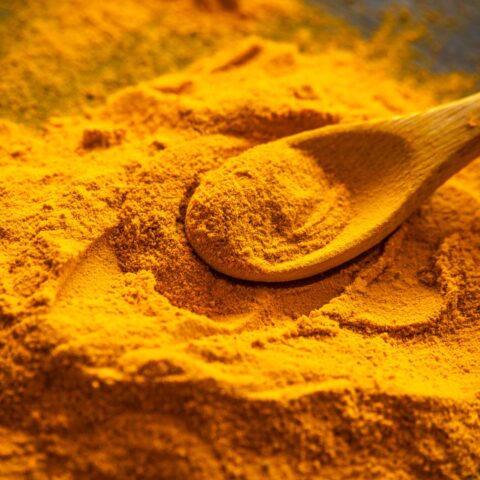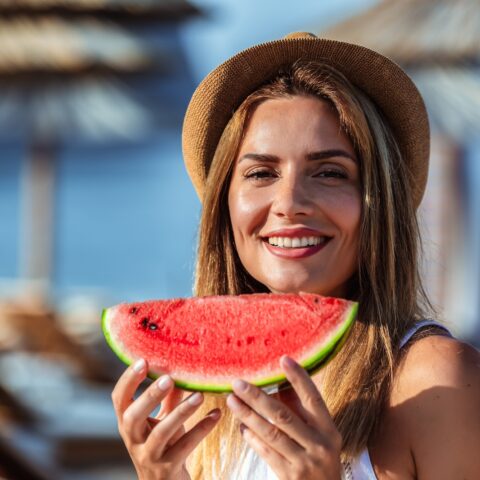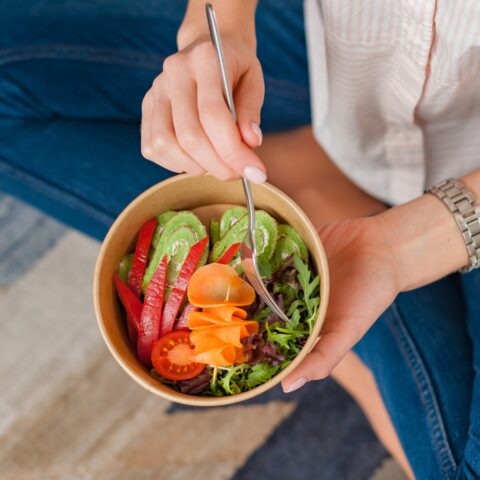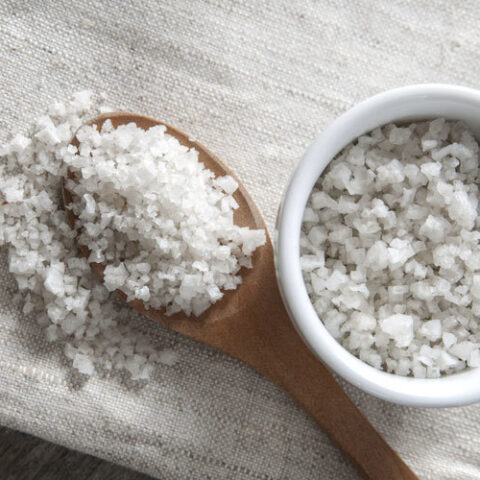How to Promote Clear Skin with The Paleo Diet
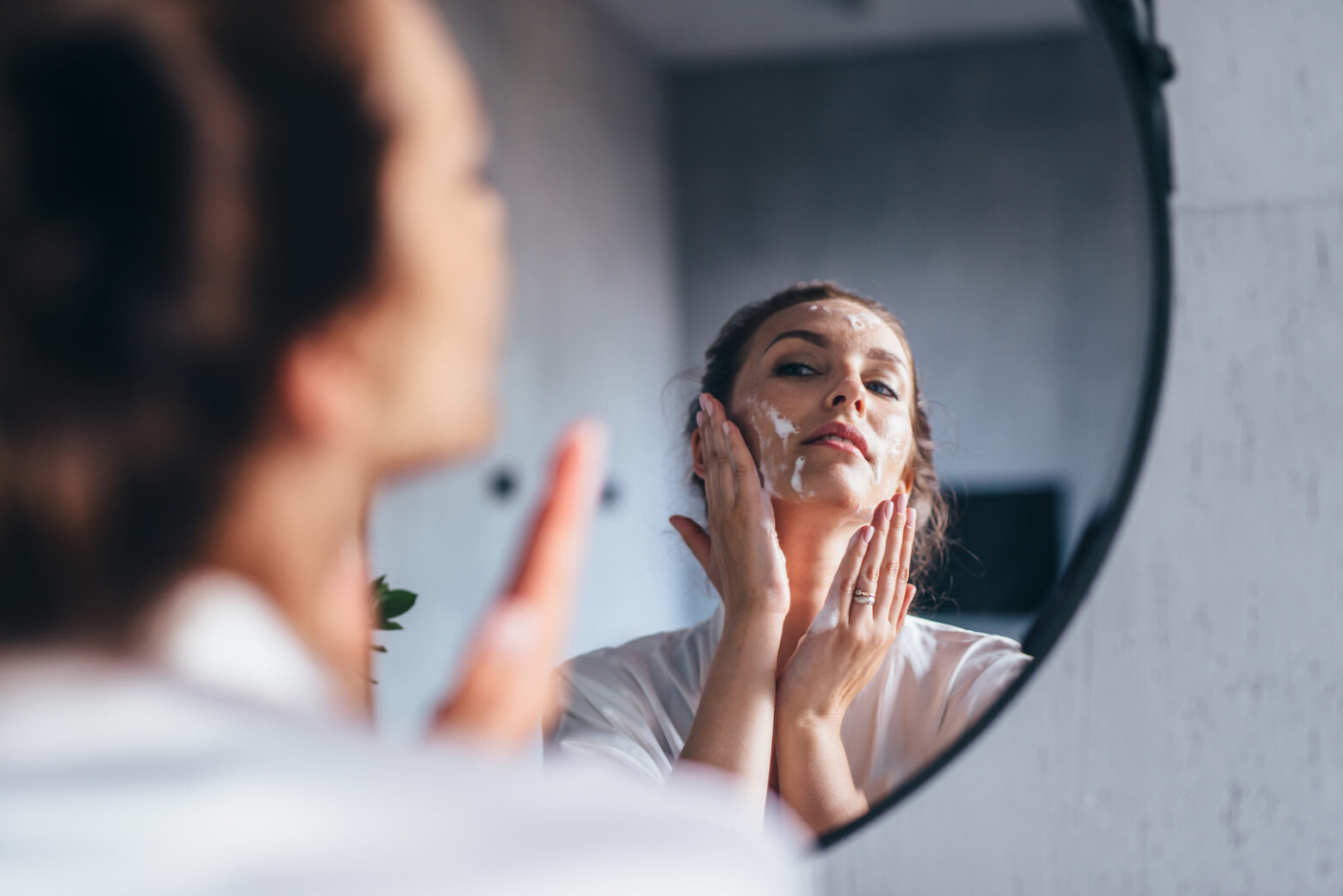
Dealing with acne on a regular basis is annoying at best, but facing a large pimple on the day of a big event can cause a lot of undue stress. Fortunately, there is a way to naturally clear blemishes and improve skin quality without the use of expensive skincare products and procedures. Though genetics can play a factor, your skin health is heavily determined by the foods you eat, and with the right diet you can attain clearer skin. While there are no magic foods for clear skin, let’s take a look at how to promote clear skin using food guidance from The Paleo Diet way of eating.
What Is Acne?
If you’ve ever been a teenager, you’re familiar with the struggle of acne. Once you hit puberty, your body starts producing tons of hormones, particularly androgens. [1] These hormones throw your body out of balance and affect your oil glands, which can lead to pores filling with oil and causing acne on your face, chest, or body.
For some people, acne tends to diminish as they develop into adults and their hormones stabilize. However, not everyone outgrows acne. And while there are countless products available on the market to “cure” acne, many of them contain harsh chemicals that don’t even work.
Foods That Contribute to Acne
In 2005, Dr. Loren Cordain, the founder of The Paleo Diet®, led a study that showed how diet can influence acne blemishes on the skin. He outlines the details in his book, The Dietary Cure for Acne, where he explains the reasoning behind the protocol that showed clearer skin in a human clinical trial. It involved a strict anti-inflammatory diet by avoiding the foods listed below for 30 days:
- Dairy: Cow’s milk, cheese, butter, cream, yogurt, ice cream, ice milk, frozen yogurt, powdered milk, non-fat dairy creamer, dairy spreads, all processed foods made with dairy, and sour milk.
- Refined and Whole Grains: Cereal, wheat, rye, barley, oats, corn, rice, millet, sorghum, and modified food starch.
- Grain-Like Seeds: Amaranth, quinoa, and buckwheat.
- Legumes: Beans, lentils, peas, peanuts, soybeans, and chickpeas.
- Starchy Tubers: Potatoes and cassava.
- Foods with Yeast: All baked goods and all fermented foods.
- Fatty, Processed, or Canned Meat and Fish: Sausage, bacon, fatty hamburger, fatty cuts of meat, processed meats, and canned or pickled meat and fish.
- Alcohol: All alcoholic beverages.
- Sweets: All candy, all refined sugars, date sugar, syrups, honey, and dried fruit.
- Vegetable and Salad Oils, Margarine, and Shortening: All processed foods cooked in these. The exceptions are olive oil, walnut oil, and flaxseed oil, but the latter two should never be used when cooking with high heat. [2]
You may have noticed that Dr. Cordain’s anti-inflammatory diet closely mirrors The Paleo Diet. When you cut out excess sugar, salt, and processed foods, you are reducing inflammation and allowing your body to shine from the inside out—including on your skin. The main difference with Dr. Cordain’s acne protocol is that you are on a strict diet for 30 days, where eating Paleo on a regular basis allows for some flexibility with non-Paleo foods.
If you’re interested in clearing acne blemishes, give the protocol a try. Avoid these foods for 30 days and observe the improvement in your skin. Afterward, gradually reintroduce these foods and monitor your skin’s reaction. Create a lifestyle that feels comfortable for you.
How to Promote Healthy Skin
There are additional daily practices you can adopt to promote the glowing, healthy skin you aim to achieve. While these actions won’t transform your skin overnight, consistency in maintaining a balanced diet and proper hydration will contribute to noticeable improvements in your skin health over time.
Drink Plenty of Water
It’s true: drinking enough water every day carries significant health benefits, particularly for skin health. Studies have demonstrated that “higher water inputs in one’s regular diet might positively impact normal skin physiology, as expressed by its hydration and biomechanical behavior.” [3]
If you reside in a dry climate, it becomes especially crucial to stay well-hydrated to nourish your skin. After consistently maintaining proper hydration throughout the day for two weeks, you will likely observe a noticeable improvement in your skin health.
Eat a Nutrient-Rich Diet
Though the following list is not exhaustive, here are some acceptable foods to eat while adhering to the 30-day anti-inflammatory diet. The most important aspect is to focus on lean meats, fish, and fresh fruit and vegetables, just like with The Paleo Diet.
- Vegetables: Cruciferous greens, root vegetables (except potatoes), peppers, squash, onions, mushrooms, cucumbers, asparagus, dandelions, eggplant, celery, rhubarb, and seaweed.
- Tubers: Sweet potatoes and yams may be slowly introduced after 30 days.
- Fruit: Berries, melons, apples, citrus, stone fruit, grapes, tomatoes, pears, mangoes, figs, papaya, pomegranate.
- Meats: Lean, grass-fed beef and lean cuts of pork such as flank steak, chuck steak, pork loin, and pork chops; trimmed of fat.
- Poultry & Eggs: Free-range poultry and omega-3 enriched eggs. Dr. Cordain recommends limiting egg consumption to six per week.
- Organ Meat: Marrow, tongue, calf liver, and sweetbreads from beef, pork, or lamb.
- Seafood: Salmon, halibut, trout, cod, tilapia, bass, eel, orange roughy, clams, crab, lobster, mussels, oysters, scallops, and shrimp.
- Nuts & Seeds: Walnuts, pecans, cashews, pistachios, hazelnuts, pumpkin seeds, sunflower seeds, almonds, Brazil nuts, macadamia nuts, and pine nuts. These should be consumed in moderation.
Supplements
The Paleo Diet generally recommends against supplements for most people because eating a wide variety of Paleo foods means you will get all the nutrients your body needs to be healthy. But there are several vitamins and minerals that you might not be getting enough of in your diet, and these can play a crucial role in supporting your skin health. Therefore, you might want to consider taking the following supplements.
Fish Oil Capsules
Omega-3 fats are a crucial nutrient for maintaining skin health. There is “strong support for the reduction of acne with regular consumption of omega-3 fatty acids and low-[glycemic index] and low-[glycemic load] diets.” [4]
While you typically obtain this nutrient from eating fish or seafood, one can only eat so much fish every day. Therefore, incorporating a daily fish oil capsule into your routine can effectively help alleviate inflammation and acne on your skin. [2]
Zinc
Another essential mineral for calming skin inflammation is zinc. Zinc can aid in normal shedding of the outer layer of your skin, unblocking your pore follicles. Think of it as a natural exfoliant.
Though on your new diet you will be eating many zinc-rich foods, you may supplement with 25-50mg of zinc gluconate daily to help speed up the skin healing process. But be careful not to overdo it: Consuming more than 100mg/day for an extended period of time can lead to copper deficiency. [2]
Vitamin D
Vitamin D is hard to naturally ingest through your diet. The most common way we gain vitamin D is through sunlight, which can have potential negative effects on your skin from excessive exposure. However, “vitamin D supplements may help with the symptoms of acne in people who are deficient in this vitamin.” [2,5]
The Bottom Line
At the end of the day, there’s no magic solution to completely rid yourself of acne. However, embracing a pure, whole diet like The Paleo Diet can significantly enhance your skin health. Just remember, you are your own biggest critic. Occasional acne flare-ups are normal, even when following a healthy diet. Don’t let insecurities take control, and don’t be disheartened by a minor breakout—opt for pure, whole foods with The Paleo Diet to really help your skin glow!
Adapted from The Dietary Cure for Acne by Loren Cordain, Ph.D.
References:
- Bruce, Debra Fulghum, and PhD. “Teens and Acne.” WebMD, 12 Nov. 2020, www.webmd.com/skin-problems-and-treatments/acne/what-is-acne.
- Cordain L. The Dietary Cure for Acne. Fort Collins, Co: Paleo Diet Enterprises; 2006.
- Rodrigues, Luís, et al. “Dietary Water Affects Human Skin Hydration and Biomechanics.” Clinical, Cosmetic and Investigational Dermatology, vol. 8, Aug. 2015, p. 413, www.ncbi.nlm.nih.gov/pmc/articles/PMC4529263/, https://doi.org/10.2147/ccid.s86822.
- Baldwin, Hilary, and Jerry Tan. “Effects of Diet on Acne and Its Response to Treatment.” American Journal of Clinical Dermatology, vol. 22, no. 1, 3 Aug. 2020, www.ncbi.nlm.nih.gov/pmc/articles/PMC7847434/, https://doi.org/10.1007/s40257-020-00542-y.
- Villines, Zawn. “Vitamin D for Acne: Research, Benefits, and How Much to Take.” Www.medicalnewstoday.com, 29 Apr. 2021, www.medicalnewstoday.com/articles/vitamin-d-for-acne#other-benefits. Accessed 5 Dec. 2023.
Isabella Mead
Isabella Mead is the Assistant Project Manager at The Paleo Diet and has experience in creating digital content for lifestyle and nutrition brands.
More About The Author
